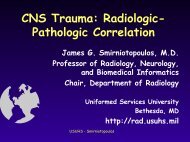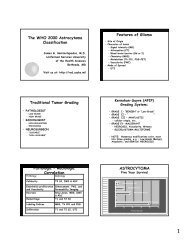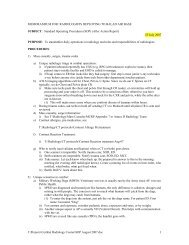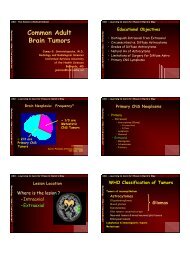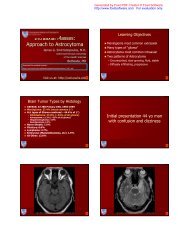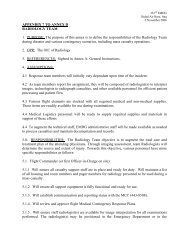Radiology Clerkship Curriculum & Site Specific Contact Information
Radiology Clerkship Curriculum & Site Specific Contact Information
Radiology Clerkship Curriculum & Site Specific Contact Information
Create successful ePaper yourself
Turn your PDF publications into a flip-book with our unique Google optimized e-Paper software.
d) Apply the systematic approach to a radiographic search pattern in the setting of<br />
abnormal radiographs<br />
2) Imaging of the Abdomen<br />
a) Identify radiographic anatomy seen on the acute abdominal series<br />
b) Correlate basic abdominal CT landmarks to radiographic anatomy and common<br />
abnormalities<br />
c) Apply the systematic approach in the setting of abnormal radiographs<br />
3) Pediatric Musculoskeletal Imaging<br />
a) Identify normal vs. abnormal skeletal structures (in the younger child and<br />
adolescent)<br />
b) Identify the hallmarks of non-accidental trauma<br />
c) Identify the Salter-Harris fracture classification and fractures suspicious for child<br />
abuse<br />
d) Assess the alignment of the pediatric elbow on a radiograph<br />
e) Interpret signs of slipped capital femoral epiphysis (SCFE) and Legg-Calve-<br />
Perthes disease on radiograph and identify in which age groups these are likely to<br />
be found<br />
4) Pediatric Chest Imaging<br />
a) Identify the proper positioning of an umbilical arterial catheter and an umbilical<br />
venous catheter, and where the catheter tips should be located<br />
b) Distinguish between respiratory distress syndrome (RDS), meconium aspiration,<br />
transient tachypnea of the newborn, and neonatal pneumonia on a radiograph<br />
c) Interpret abnormal chest radiographs<br />
5) Pediatric Gastrointestinal (GI) Imaging<br />
a) Identify radiographic anatomy seen on abdominal radiographs<br />
b) Identify various radiographic findings in children, specifically: newborn<br />
gastrointestinal obstruction including midgut volvulus, Hirschsprung’s disease,<br />
intussusception, hypertrophic pyloric stenosis (HPS), and appendicitis; and,<br />
identify the best imaging technique for each condition<br />
c) Interpret abnormal GI radiographs<br />
d) Interpret a basic upper GI series, small bowel series, and barium enema<br />
6) Musculoskeletal Imaging<br />
a) Identify and diagnose musculoskeletal trauma radiology with an emphasis on<br />
deployment related injuries<br />
b) Describe a general timeline for fracture healing will be covered along with<br />
radiology pitfalls including satisfaction of search, inadequate number of<br />
projections and peripherally positioned pathology<br />
c) List stress fracture sites and identify these injuries by radiography that are<br />
prevalent in military training<br />
d) Discuss several fracture types and dislocations that are frequently missed in<br />
clinical practice<br />
e) Compare fractures vs. infection and identify findings associated with acute<br />
infection as may be seen as a result of open fracture in a combat setting<br />
7) Cervical Spine Imaging<br />
a) Identify the basic anatomy of the cervical spine<br />
b) Describe the appropriate imaging modality for cervical spine trauma




